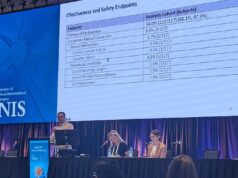
Race, in combination with other factors, predicted how quickly individuals with stroke got to care centres to receive necessary neuroendovascular surgery, including thrombectomy, according to research presented at the Society of NeuroInterventional Surgery’s 18th annual meeting (SNIS; July 26–29 2021, Colorado Springs, USA and virtual).
The study, entitled “Disparities in Stroke: Influence of Socioeconomic Status and Race on Timely Access to Mechanical Thrombectomy,” reviewed data from 305 patients collected between 2016 and 2020 to find out how factors including race, socioeconomic status, health insurance coverage and driving distance to a stroke centre influenced how quickly individuals were able to receive stroke surgery.
In the study, authors measured the time between each patient’s stroke onset and the beginning of surgery, with a focus on the time from onset to arrival at the hospital. The researchers found that race was among the predictors for how quickly patients made it to a stroke centre, which impacts how quickly they can have surgery.
Other factors included driving distance, the patient’s stroke severity level and whether a patient discovered the stroke symptoms upon waking. The authors also found that income, age and gender were not predictors for timely access to care among this group of patients.
“Your race, ZIP code or socioeconomic status should not determine whether you make it home from the hospital after a stroke,” said Ricardo Hanel, lead author for the study, and an endovascular neurosurgeon and co-medical director of the Baptist Stroke & Cerebrovascular Center in Jacksonville, USA. “This study shows that equity of access to care is critically important in achieving excellent outcomes for all.”











